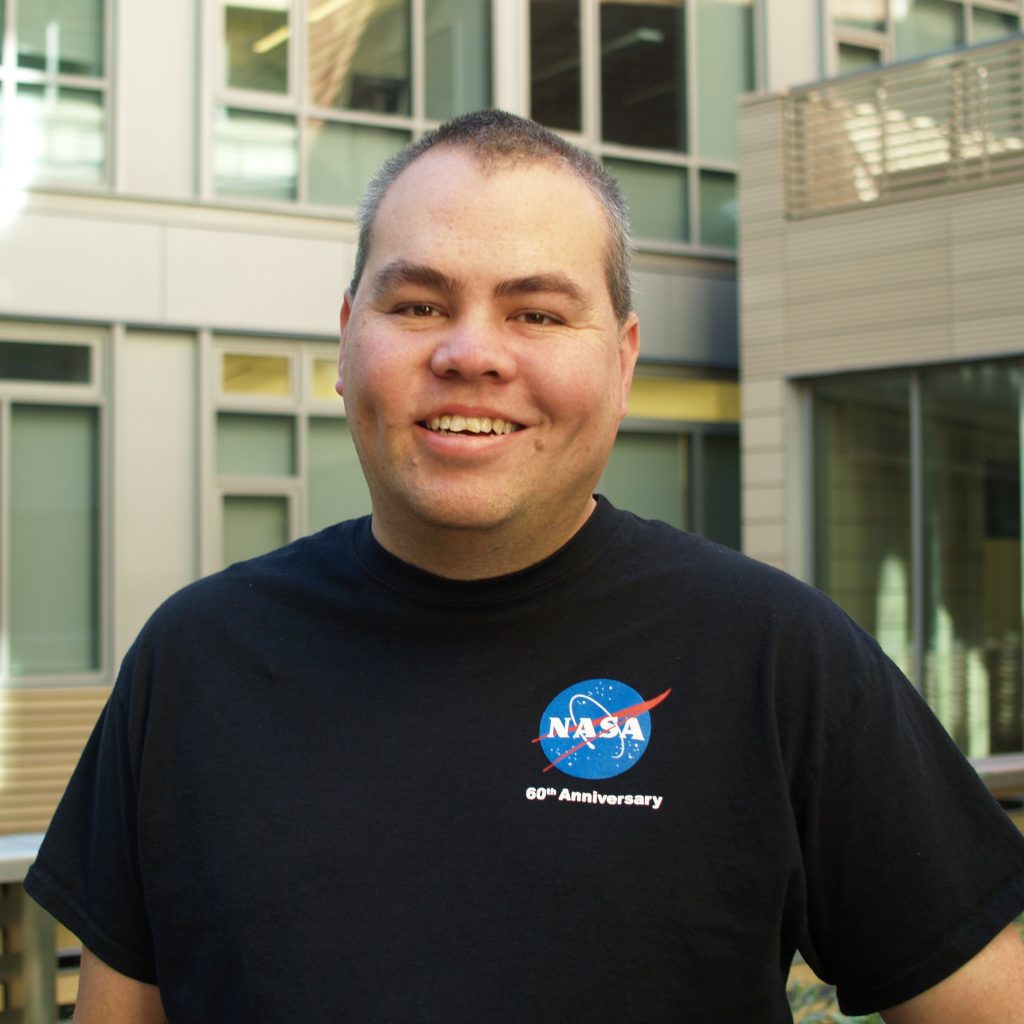Podcast: Play in new window | Download
Subscribe: Apple Podcasts | RSS

This episode is sponsored by Rohde & Schwarz. Check out their reviews of their new product line at AskAnEngineer.us, including a video review from friend of the show Shahriar from The Signal Path.
Welcome, Dr Adrian Tang of NASA’s Jet Propulsion Laboratory (JPL)!
- Adrian is the only CMOS chip designer at JPL (though he has grad students)
- He got his PhD at UCLA working on ultra high frequency devices. Check out some of his projects on his personal website.
- JPL has instruments that can measure these high frequencies.
- Terahertz spectroscopy
- There’s a noise floor in the universe, but gases tend to emit at certain frequencies in the 50-500 GHz region.
- Resonance in the THz range
- Pressure has to be low
- Trying to process as much bandwidth as possible
- Try to get 3GHz of bandwidth out of devices.
- 4000-8000 point FFT
- Power budget might only be 50W on a satellite.
- Was doing commercial CMOS previously
- Horn antenna + lens
- Tempest D mission
- Using cosmic background as a cal point
- What is the output data?
- Time domain data
- Using the LO to remove the movement of the spacecraft
- Doppler properties
- Herschel telescope
- Reflector to focus it down into the feed is about a meter
- Has to be accurate to lambda over 20
- Goes into a receiver feed
- Mixer needs an LO
- IF comes out of the mixer at 3-4 GHz
- Takes it through the IF chain
- Amps and filters
- Apply a window function
- Polyphase filter
- Compute the FFT
- 1 sample isn’t enough to see something
- Average over 1000s of samples
- Rosetta orbiter was put out by ESA
- The more spectrum, the more chance to discover something
- RekTangLE balloon mission
- Measuring NO2 at 570 GHz
- Did have a failure
- This was one of the first CMOS chip to do atmospheric measurement
- Isotopes have different lines
- Heavy water and regular water
- Heavy water is naturally occurring
- Everywhere you go, the ratio is comparable, in the solar system
- Moreau on a jovian comet
- How have things moving into CMOS?
- Active and Passive Receivers
- Northrop Grumman makes some of the only amplifiers that can operate up to 600 GHz
- Past guest Tony Long talked about (relatively) high frequencies and works at NG
- Passive is a mixer first instead of an amplifier first
- Schottky mixer
- Express sensitivity in terms of difference
- Hot electron bolemetric mixers
- Exotic semiconductor junctions
- What has improved?
- Windfreak
- Packaging is not simple
- Waveguide is the only thing that will work at 100G
- They do a lot of the fab in house at JPL
- Measuring snow in the Sierras using Ku band radar
- SWE – Snow water equivalent
- SpectreRF
- Built in self test
- Everything on chip is the best case
- Using different process technologies
- 65 nm process technology cannot work with 180 GHz signals.
- What is this stuff useful for?
- Short range 60 Ghz
- Ken Cooper
- Threat detection, 680 GHz radar, 30 GHz bandwidth
- Another balloon “whatsup” will go up soon. Read about it and other balloon launches (past and present) here.
- Astros – 8 px, multi THz telescope
- Ground penetrating radar
- UAV snow sensor
- Check out more of Adrian’s work on sadcircuitdesigner.com
- Or check out his papers on his “articles” page

Where is the youtube clip mentioned in the commercial?
https://www.youtube.com/watch?v=YokF2_EbfIk
Thanks =) I really appreciate your take on the commercials and it was a really good move to lower the music. Before that my brain couldn’t make out what was being said for some reason, it just locked onto the music instead.
Great! Glad the lower levels helped. I heard that from a few folks and really appreciated the feedback! I probably listened to it too many times and couldn’t hear how distracting it was during the segment. I agree it’s much easier to focus on the content now. Thanks!